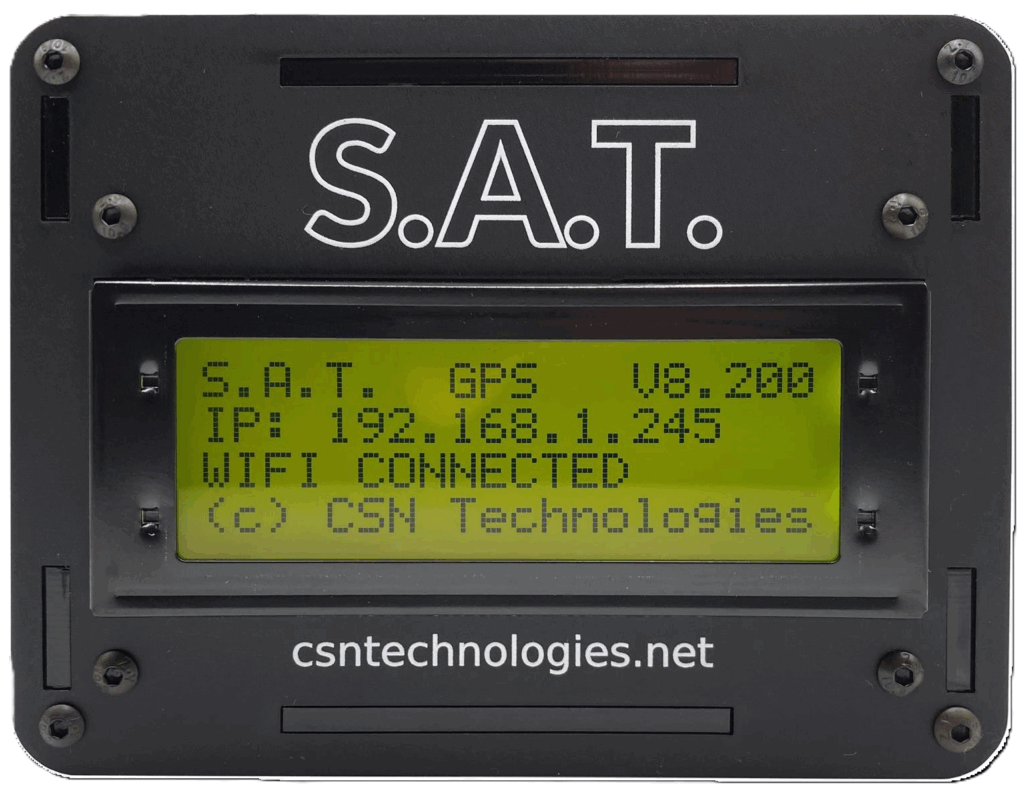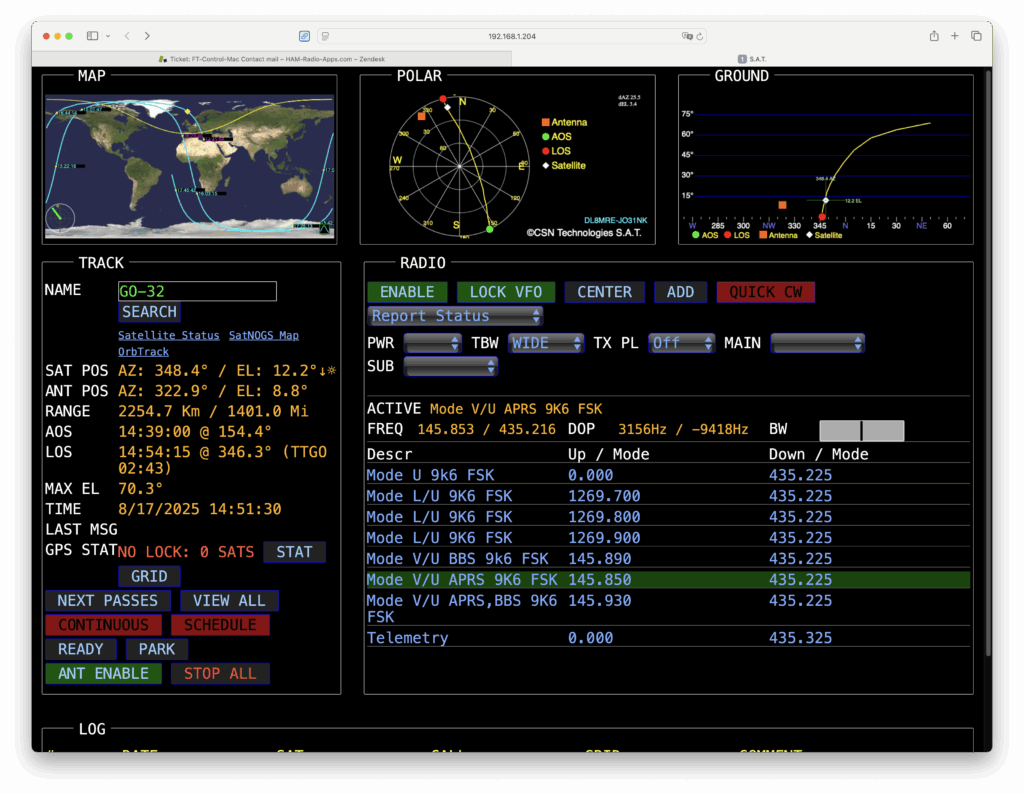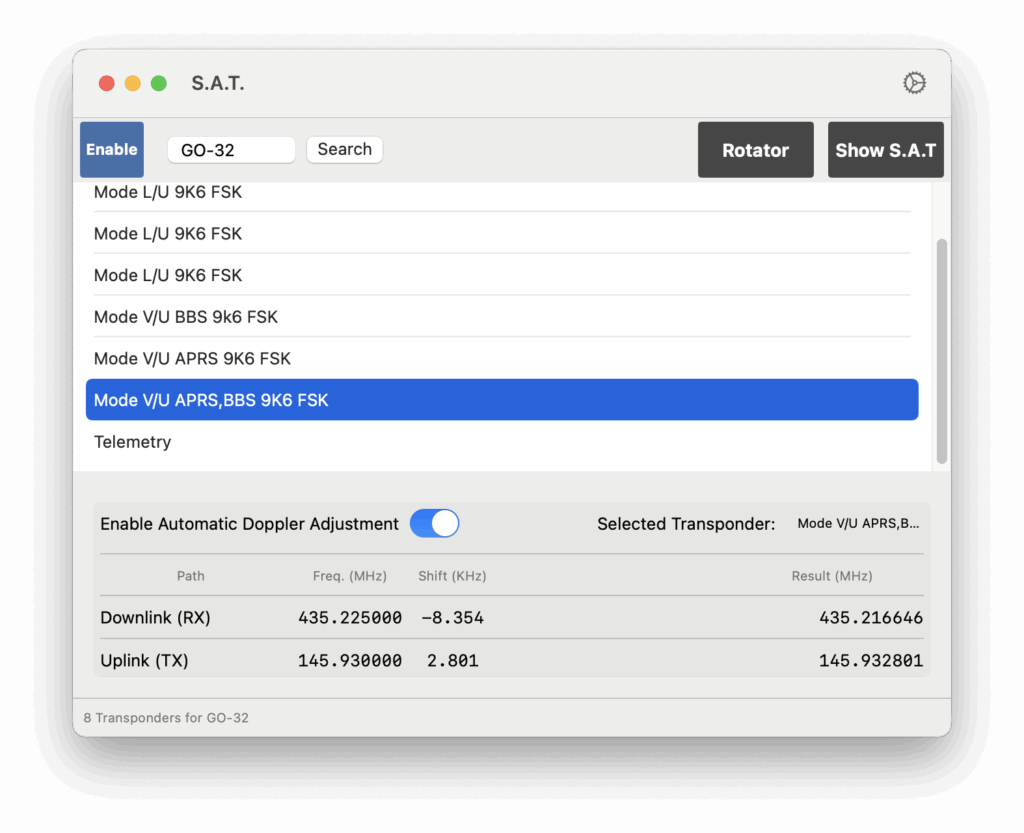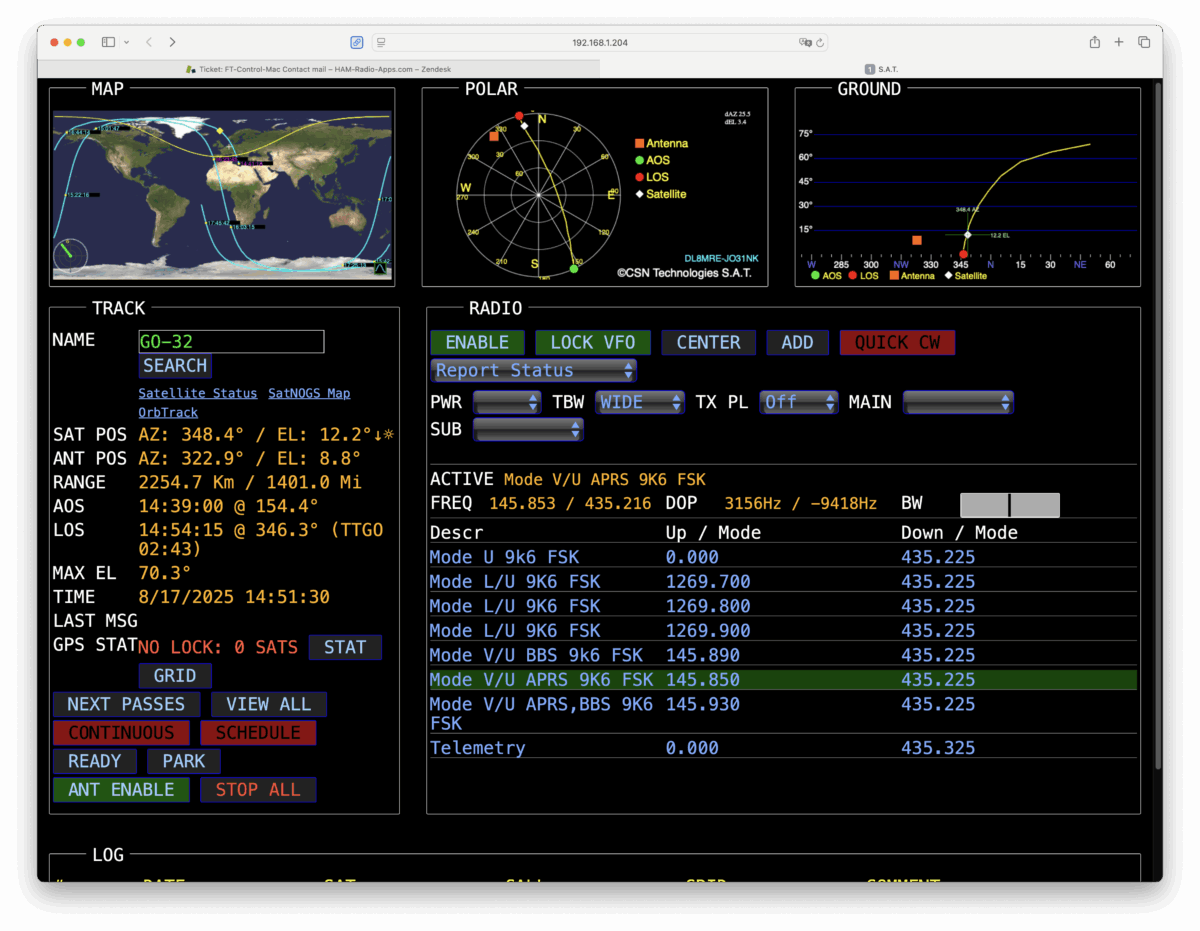The recent SSTV pictures received from the ISS were fascinating and inspired me to take a closer look at satellite communication again.
QO-100 – Easy to Use, But Predictable
Some time ago, I spent quite a bit of time operating the QO-100 satellite. With just a small 80cm dish, it’s possible to work the geostationary satellite from most of Europe (but not from the US). It works reliably, and you can make QSOs in SSB, CW, FT8, and FT4.
At first, it was great fun. But over time, it became a little boring—mainly because you hear the same stations again and again, with the exception of some rare DX-peditions. Since the effort to get on QO-100 is fairly low and the conditions are always predictable (no DX-style challenges with propagation or weather), I eventually stopped using it.
LEO Satellite Operation – A Real Challenge
Operating via LEO satellites is much more demanding—and that makes it more interesting. Since these satellites are constantly moving across the sky, you need both elevation and azimuth rotators. On top of that, the Doppler effect means you have to continuously adjust RX and TX frequencies as the satellite approaches or moves away.
There are plenty of solutions for this, but most of them require a lot of cabling between the radio, PC or Mac, and the controller. To me, that felt like HAM radio from the stone age—and I really didn’t like the idea of being tied down to wires.
That’s when I discovered the S.A.T. device from CSN Technology.
The S.A.T. Device – Modern Satellite Control
The S.A.T. device turned out to be exactly the solution I was looking for.

What It Offers
- Direct connection to the rotator controller
- WiFi connection to the local network
- A web interface with an easy-to-use satellite selector
- Automatic rotator control and Doppler correction
- A developer API for seamless integration
That last point, the API, made it possible for me to integrate the S.A.T. device directly into my apps. Setting it up is surprisingly simple: connect it to your rotator controller with the included cable, add it to your WiFi network, and that’s it. From then on, the app connects to it automatically, tunes the correct RX and TX frequencies, and even handles Doppler shift corrections—without the need for a CAT cable.
For satellite selection and general information, the web interface is still very convenient. Once you’re on the air, the S.A.T. device keeps the antenna pointing at the right satellite, while the app manages all the frequency adjustments in the background.

Integrated Control in the App
With the upcoming integration, the S.A.T. device interfaces directly with the app. Below are two screenshots of SDR-Control that demonstrate how S.A.T. device interface with Doppler correction and transponder selection options.

This is the Rotator interface of SDR-Control for the S.A.T.

More Than Just Satellites
Even if you’re not into satellites, the S.A.T. device is still useful. For example, it can act as a network-based rotator controller for a HF Yagi antenna, which is a nice bonus.
Coming Soon in HAM-Radio-Apps
Support for the S.A.T. device is coming to the HAM-Radio-Apps, starting with SDR-Control for Icom. This will make operating satellites (and rotators in general) much easier and far more modern.
Stay tuned—this feature is on the way!
